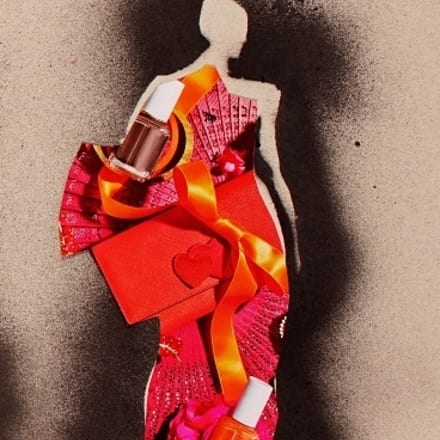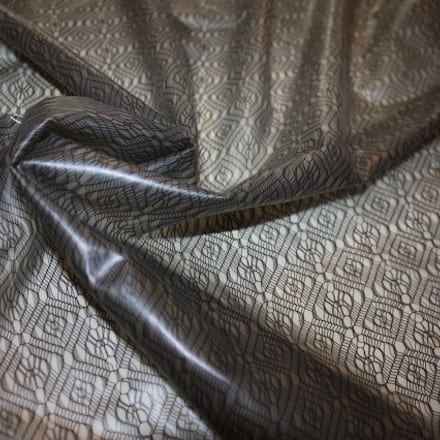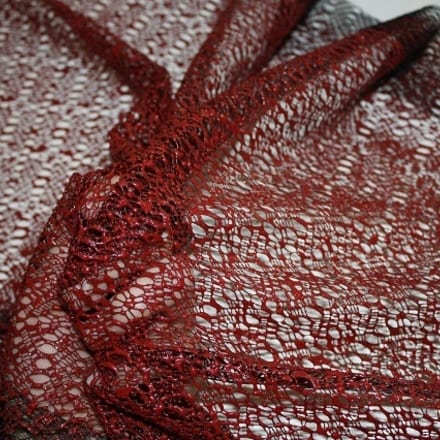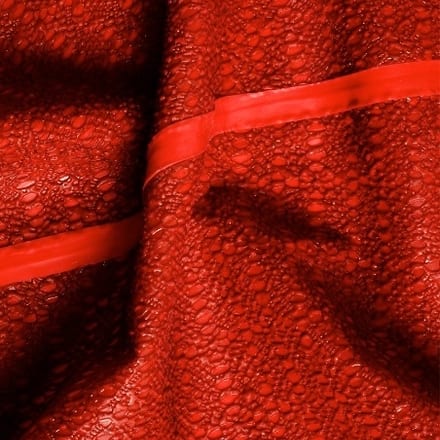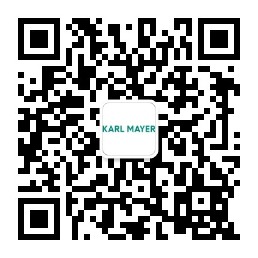Lace and latex – two specialists in the art of seduction join forces to tread the fashion stage
Master’s student, Sara Linke, is reinventing the lace theme and inspiring the clothing sector
Lace is back in focus again for contemporary fashion. These delicate fabrics are no longer reserved exclusively for seductive underwear, they are also being used in many outerwear collections.
The master’s thesis of Sara Linke has shown what can be achieved by using lace in an ingenious and creative way. This young designer concluded her studies in fashion design at the Fakultät Angewandte Kunst Schneeberg der Westsächsischen Hochschule Zwickau (Faculty of Applied Arts, Schneeburg, at the West Saxony University of Applied Sciences, Zwickau) by creating a collection based on a completely new and unconventional combination of materials – latex and lace.
Acceptable latex meets traditional lace – a combination with a better image
Latex has shaken off its slightly sleazy image and is no longer part of the underground scene. Spurred on by the need to work innovatively and seek out new trends, Sara Linke decided to use latex to create warp-knitted textiles having unusual characteristics. “Developing the substrate using warp-knitted textiles was the most important aspect of my thesis,” explained this master’s student. This future designer went on to say that combining lace, i.e. mesh constructions, with latex had been an important aspect for her right from the beginning. This combination has enabled her to spin a web of suspense out of harmony and contrasts. “Lace is seen as something innocent and playful, whereas latex is slightly edgy and unfamiliar. However, the two materials are similar in some respects – for example, they are both seductive,” says Sara Linke when explaining the reasoning behind her concept.
Two materials, many combination options
Whilst working with lace and latex, it became obvious that combining the two materials could create new and exciting aesthetics. The lace may be covered or coated with the elastic or natural rubber product, and not only takes on its characteristic sheen, it also creates a striking, visual look. Other characteristics may also change, depending on how the two materials are combined. These can be manipulated in a variety of different ways. Sara Linke experimented with numerous different variations to produce products similar to laminates, having interesting performance features. For example, open, warp-knitted fabrics can be placed into liquid latex. Once dry, smooth webs are produced whose transparency, drape and feel can be influenced by the thickness of the layer. In general, thin rubber coatings produce a soft, supple drape. The handle is soft and the contours shimmer under the fabric as if through frosted glass. Thick layers, on the other hand, increase the rigidity. The handle is dominated by the rubber-like properties and the laminate is opaque. Different coloured effects can also be produced by mixing in dyes.
As well as being used to treat the entire surface, individual yarns can also be coated with a more viscous latex. This process makes the warp-knitted textiles more stable. They retain their open structure and thus their filigree appearance. Both of the elements in the assembly have at least an equal effect on the haptics and drape.
A positive effect that can be achieved by wetting and laminating the entire fabric is that the elasticity of the original warp-knitted fabric is retained – if it already has inherent stretch properties.
A master’s collection heralds innovation
Sara Linke finally decided on a technique involving a two-step process. The mesh is covered first of all to give the structures some contours. The web produced is then placed into liquid latex. An impermeable textile is produced having the “morbid” look that Sara Linke was looking for. This two-step process can also be modified extensively.
Sara Linke intends to produce a number of garments from these fabrics by the autumn. “The collection is aimed at the premium segment. The exclusive appearance belies the edginess of the look, which you don’t see at first glance,” the student explained. She also used conventional (apparel) textiles, such as wool and silk, to soften the look and create contemporary pieces – a variety of different materials that should enable some unusual garments to be produced. The industry is already on tenterhooks. Gabriela Schellner, the Head of Textile Development at KARL MAYER, is certain of one thing, “The laminated materials produced by Sara Linke are a highly unconventional and creative way of showcasing lace, which will inspire textile producers and making-up companies and provide opportunities for developing completely new clothing lines.”
Gabriela Schellner and her team provided the student with the lace fabrics and were on hand to answer any of her questions. The latex was sponsored by the company, latexmanufactur.de.
For more information on Sara Linke go to www.saralinke.com or info@saralinke.com
Back to overview